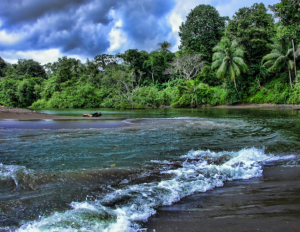10 Facts About Sanitation in Costa Rica

Costa Rica is a truly unique place; it contains 5 percent of the world’s biodiversity and people categorize it as one of the happiest countries in the world. Its economy is stable, showing a little more than a 3 percent yearly growth rate. Costa Rica has had some challenges with sanitation but is working to improve it throughout the country. Below are 10 facts about sanitation in Costa Rica.
10 Facts About Sanitation in Costa Rica
- Around 99 percent of the population has access to a water source, but only 82 percent have continued access to a reliable water drinking source. This number has improved since 2015 when only 92.4 percent of people had access to a clean water source. Moreover, clean water access is continuing to improve with community and public-based programs such as Acueductos y Alcantarillados (AyA), an organization that works to raise funding to expedite current projects to provide nationwide access to water.
- Costa Rica’s unpredictable climate and susceptibility to natural disasters are its biggest hurdles to developing better infrastructure for water sanitation. For example, a drought in Costa Rica from 2014 to 2016 caused by El Niño drastically hindered the construction of new infrastructure to expand water access in the country. A study by the Inter-American Development Bank predicts that Costa Rica’s water supply will reduce by half by 2050, despite increasing demand.
- The Integrated Water Supply Programme for Guanacaste (PIAAG) works with other organizations to implement fixed and long-lasting solutions to water sanitation. Proposed solutions to improving water sanitation include irrigation, drainage and drinking water projects. More institutions developed a plan from 2018-2030 to maintain ecosystems while improving water sanitation and access.
- Pollution of water sources, mainly through human activity and inefficient land usage, also drastically affects the availability of water to citizens. In order to fix the problem of water pollution, Costa Rica provides incentives to clean up water sources. The National Water Laboratory monitors the use of agricultural pesticides and their runoff.
- Costa Rica currently treats only 14 percent of wastewater before releasing it to the public, but Costa Rica is trying to fix this problem. The National Wastewater Sanitation Plan emerged in 2017, and it hopes to safely manage all wastewater by the year 2045. The organization allocated $3.6 million to expand access to water in urban areas and $2.5 million to increase water access and quality in rural areas. The National Wastewater Sanitation Plan became public policy in 2017.
- Across the country, several projects to clean sewage are taking place, including eight projects in tourist areas and 10 to improve the conditions of existing sewage plants. For example, the Administrations Associations of the Systems of the Aqueducts and Communal Sewers (ASADAS) works to build, monitor, operate and maintain rural water aqueducts. Water sanitation projects in Costa Rica receive funding from inside the country and from foreign countries, like Germany, which funded eight coastal projects.
- The fast population growth and desire of citizens to live in urban areas of the country, rather than rural areas, has further complicated the sewage problem. This, in some cases, leaves inadequate sewage in the overcrowded cities. In the most populated cities, only 19.4 percent of sewage receives treatment. Many regulations in Costa Rica, such as “Ley General de Salud” (General Health Law), have emerged to establish basic requirements for water sewage in Costa Rica.
- Costa Rica’s Ministry of Health is an important organization that works to provide people improved access to sanitation. For example, the Ministry of Health controls the National Observatory of Human Resources in Health. It establishes academic and research institutions to study the causes and effects of poor sanitation, along with social government organizations that advocate for government action through public policy.
- During Hurricane Otto in 2016, waterborne viruses such as Zika and dengue spread among the population, and the Ministry of Health sent workers to help control the outbreak. Soon after, President Luis Guillermo Solís stated that the government would build more toilets, showers and water fountains for residents. The Ministry of Health also sends garbage trucks to pick up trash around especially populated urban areas.
- The last of the 10 facts about sanitation in Costa Rica discusses child mortality in Costa Rica, which has decreased greatly over the past few decades, going from 68 per 1,000 live births in 1970 to about 8.8 per 1,000 live births in 2018. One can attribute the decrease to an extension of health care programs to rural and communal areas.
While Costa Rica still has far to go in improving its sanitation, the overall sanitation of the country has improved greatly over the past few decades. These 10 facts about sanitation in Costa Rica demonstrate Costa Rica’s planned pathway to improving sanitation, and overall, Costa Rica’s future is looking bright.
– Shveta Shah
Photo: Flickr
